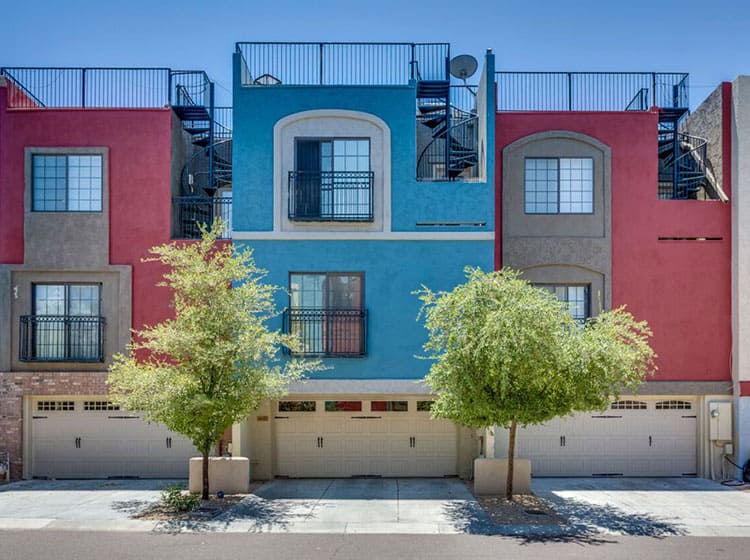Learn Just How Weather Condition Aspects Can Influence The Success Of Your Exterior Painting Task And Attain A Remarkable Finish
Learn Just How Weather Condition Aspects Can Influence The Success Of Your Exterior Painting Task And Attain A Remarkable Finish
Blog Article
Short Article Created By-Boyle Mohammad
Comprehending exactly how weather conditions can affect the outcome of an exterior painting venture is paramount for accomplishing a perfect finish. From temperature level changes altering paint attachment to humidity levels affecting drying times, each component of weather plays a significant function in the success of your task. In addition, wind rate and precipitation can present unforeseen challenges that may compromise the top quality of the outcome. As we navigate through the subtleties of weather's effect on external paint, it ends up being apparent that thorough planning and critical timing are crucial for ensuring a professional and durable end result.
Suitable Temperature Range for Paint
When taking into consideration exterior painting tasks, the excellent temperature level array plays an essential role in achieving optimum outcomes. Painting in read full article guarantees that the paint adheres properly to the surface, dries out uniformly, and cures effectively. Typically, the recommended temperature array for outside painting is between 50 to 85 degrees Fahrenheit.
Paint in temperature levels listed below 50 levels Fahrenheit can result in issues such as poor paint attachment, long term drying out times, and an enhanced probability of splitting or peeling off.
On the other hand, paint in temperature levels over 85 levels Fahrenheit can cause the paint to dry also swiftly, causing blistering, gurgling, and an irregular finish.
To attain the very best results, it is important to examine the weather report prior to beginning an outside paint task. Preferably, purpose to repaint throughout light weather conditions with modest temperature levels and reduced moisture degrees.
Impacts of Humidity on Paint Drying
Humidity levels significantly influence the drying out process of paint applied to exterior surfaces. High moisture can extend the drying out time of paint, causing possible problems such as leaking, streaking, or even the formation of bubbles on the painted surface. https://martinmerle.worldblogged.com/39927921/transform-your-space-reveal-the-benefits-of-engaging-expert-home-painters-for-your-home down the dissipation of water from the paint, hindering the curing process. This is particularly bothersome for water-based paints, as they rely on evaporation for drying.
On the other hand, reduced moisture degrees can likewise influence paint drying out. Incredibly completely dry conditions might trigger the paint to completely dry also rapidly, leading to inadequate adhesion and a harsh coating. In such situations, including a paint conditioner or splashing a great mist of water in the air can aid manage moisture levels and enhance the painting result.
To guarantee optimal drying out conditions, it is recommended to paint when the humidity levels range in between 40% and 50%.
Monitoring humidity levels and taking ideal actions can help attain a smooth and sturdy paint coating on exterior surfaces.
Wind and Rainfall Factors To Consider
Wind rate and rainfall are critical variables that dramatically affect the success of an outside painting job.
When it involves wind, both rate and direction are important considerations. High wind speeds can cause paint to completely dry as well quickly, resulting in a poor finish with possible issues like fracturing or irregular appearance. In addition, wind can carry particles that may adhere to the wet paint, causing blemishes. Consequently, painters should intend to deal with days with light to moderate winds for ideal painting problems.
On the other hand, rainfall, whether rainfall or snow, can be very destructive to the result of an external paint job. Moisture from precipitation can prevent paint attachment, triggering peeling and bubbling over time. It is important to avoid painting throughout wet or snowy climate to make certain the long life and top quality of the paint job. Painters ought to also permit sufficient time for the surface area to dry extensively after any kind of rainfall prior to beginning or returning to the painting process.
Conclusion
In conclusion, climate condition play a considerable function in the outcome of an external paint job. The optimal temperature level array, moisture levels, wind rate, and rainfall all add to the success or failing of the paint task.
https://interior-painter-near-me21108.actoblog.com/34562241/necessary-inquiries-to-ask-prior-to-hiring-home-painters is essential to consider these factors and plan accordingly to make certain proper paint bond, drying out times, and total top quality of the finished product.
